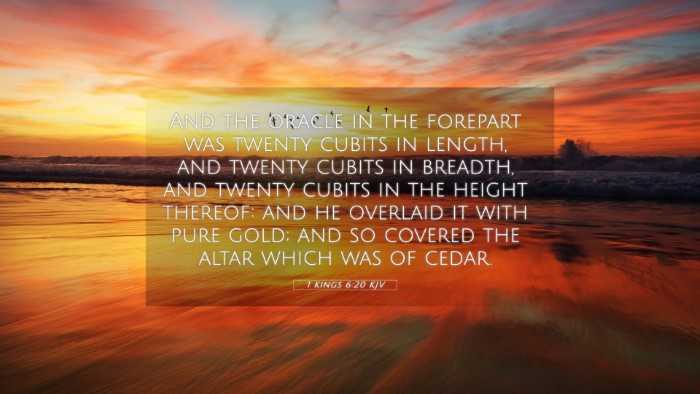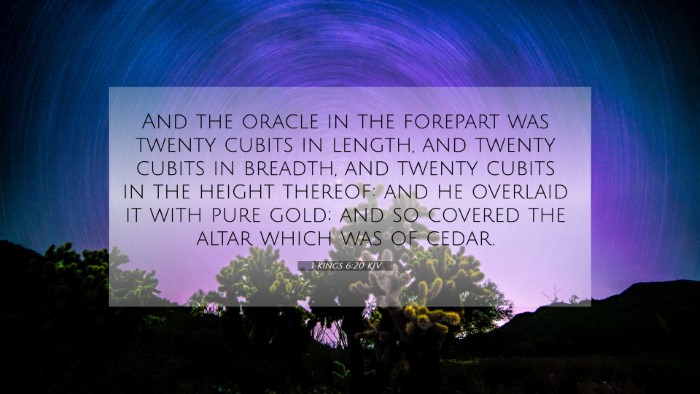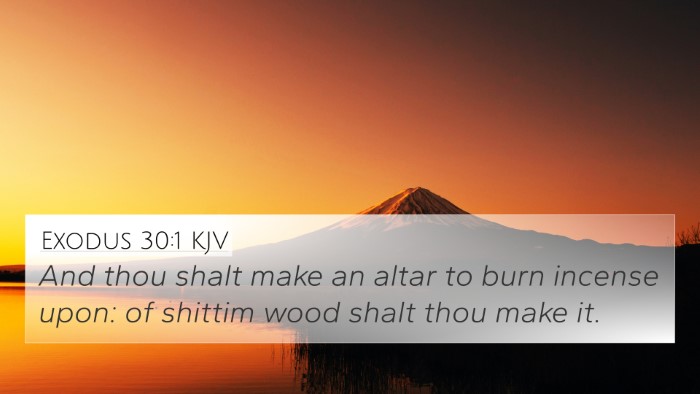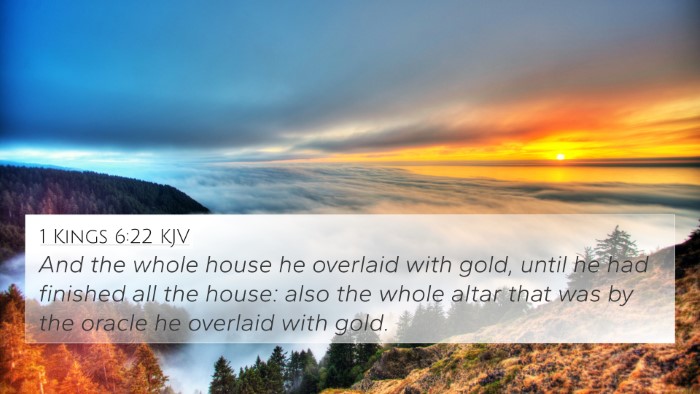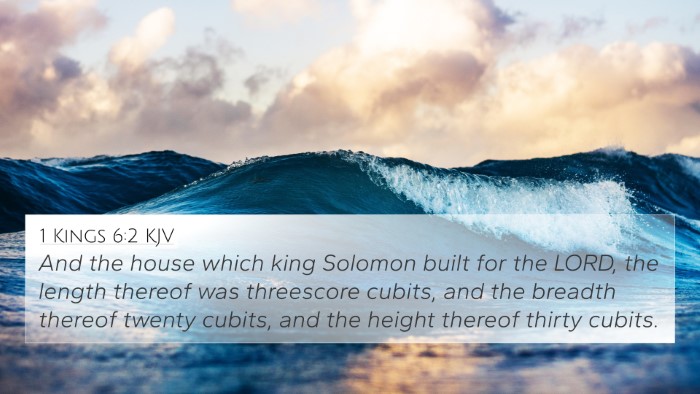Understanding 1 Kings 6:20
Bible Verse: 1 Kings 6:20 - "And the oracle in the forepart was twenty cubits in length, and twenty cubits in breadth, and twenty cubits in height thereof: and he overlaid it with pure gold, and so covered the altar which was of cedar."
Summary of 1 Kings 6:20
This verse describes the dimensions and decoration of the most holy place, or "oracle," in Solomon's temple. It reveals not only the physical specifications but also emphasizes the purity and opulence of the materials used, particularly the gold overlay, which signifies sanctity and divine approval.
Insights from Commentaries
Matthew Henry's Commentary
Henry notes the significance of the dimensions of the oracle, highlighting that the perfect cubic shape symbolizes completeness and divine perfection. The purity of the gold used further represents God's holiness, setting apart the oracle as a unique space consecrated for worship. The altar of cedar being overlaid with gold indicates the value placed on the place of sacrifice.
Albert Barnes' Notes
Barnes underscores that the 20 by 20 cubit measurements reflect a space designed to be a fitting dwelling for the divine presence. He points out that the lavish use of gold signifies not just embellishment but an acknowledgment of God's magnificence and glory. Furthermore, the simplicity of the altar's structure contrasts with the purity of its covering, which speaks to the complexity of worship.
Adam Clarke's Commentary
Clarke offers a detailed analysis of the symbolism in the measurements. He suggests that the cubic shape can represent stability and perfection, while the dimensions relate to an understanding of God's eternal nature. The gold overlay, according to Clarke, not only enhances the aesthetic value but symbolizes God's unending value in the life of the worshipper.
Cross-References to 1 Kings 6:20
- Exodus 25:10-22: The specifications for the Ark of the Covenant, which relates to divine presence in Israel.
- 1 Chronicles 28:11-12: David providing instructions for the temple, illustrating the continuity of worship.
- Hebrews 9:3-4: Details the symbolism of the holy of holies, drawing parallels to Christ's atonement.
- Matthew 27:51: The tearing of the temple veil at Christ's crucifixion, signifying access to God.
- Revelation 21:15-21: Describing the New Jerusalem and its divine glory, echoing the themes of holiness and divine presence.
- 1 Corinthians 3:16-17: The notion that believers are the temple of God stands in contrast to the physical temple.
- Isaiah 6:1-3: Offers a vision of the holiness of God, akin to the sanctity of the oracle.
- 2 Chronicles 3:8-9: Additional details concerning the temple's construction, emphasizing the importance of the holy place.
- Psalms 29:9: The voice of the Lord in His temple finds resonance in the sacredness of the oracle.
- Luke 1:35: The Holy Spirit's role in the conception of Jesus, relating back to the sanctity of the holy places.
Thematic Connections
This verse serves as a pivotal point for thematic studies, connecting sacred space with divine interaction. It underscores God's desire to dwell among His people, a theme prevalent throughout Scriptures.
Connections Between Bible Verses
The examination of 1 Kings 6:20 through the lens of inter-Biblical dialogue reveals not only the physical aspects of the temple but also spiritual implications that resonate throughout both the Old and New Testaments. For example, the discussions in the Gospels and Letters of Paul regarding believers as a temple demonstrate a continuity of the theme of divine presence.
Conclusion
In conclusion, 1 Kings 6:20 encapsulates vital lessons on holiness, reverence, and the importance of worship spaces in the biblical narrative. By leveraging tools for Bible cross-referencing and exploring thematic connections, one can enrich their understanding of scripture and the profound implications it has for faith and worship today.

